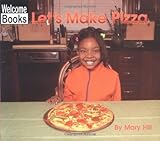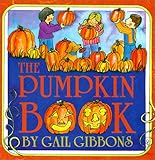Lesson 1: Step-by-Step Directions
Lesson Plan
Let's Make Pizza | 120L

- Learning Goal
- Explain that procedural texts have steps that tell you how to do something.
- Identify a step in a procedural text.
- Duration
- Approximately 50 minutes
- Necessary Materials
- Provided: Unit Example Chart, Independent Practice Worksheet
Not Provided: Let’s Make Pizza by Mary Hill, The Pumpkin Book by Gail Gibbons, chart paper, markers, sticky notes
-
Teacher Modeling

will introduce “how-to” books, or procedural texts, by explaining that some books tell readers how to do something. For example, a person might read this kind of book to learn how to fix their television, knit a sweater, or bake a cake. These types of books give readers step-by-step directions. One characteristic of how-to books is that they have steps. I will explain that a step is a new action that the author asks the reader to do, to complete a task. I will write this characteristic on my Characteristics of Procedural Texts Chart (example provided). I will model how to identify the steps in Let’s Make Pizza by Mary Hill. I will read the book, and each time I come across a new action or step that the author tells me to do, I will label it as a step with a sticky note. Now that I have identified the steps in this text, I will add Let’s Make a Pizza to my chart since it is an example of a “how-to” or procedural text.
-
Think Check
Ask: "How did I identify the steps in a task?" Students should answer that you identified actions that the author asked you to do to make a pizza.
-
Guided Practice

will read “How to Carve a Pumpkin” in The Pumpkin Book by Gail Gibbons. Each time the author gives the reader a new action that they should do, we will describe the step on a sticky note. We will add the title of the section and book to our chart. Together, we will read “How to Dry Pumpkin Seeds” at the end of The Pumpkin Book by Gail Gibbons.
-
Independent Practice

will illustrate the three steps from, “How to Dry Pumpkin Seeds” in The Pumpkin Book. You will explain how you know this is a “how-to” text. (Independent Practice Worksheet is provided.)
Texts & Materials
Standards Alignment
(To see all of the ReadWorks lessons aligned to your standards, click here.)


